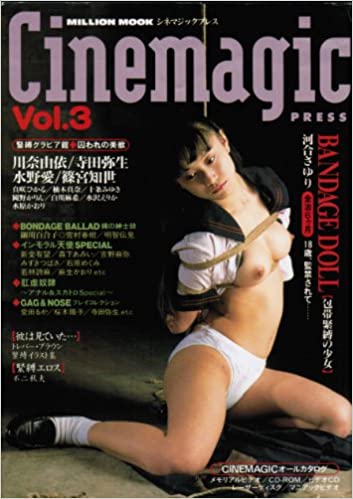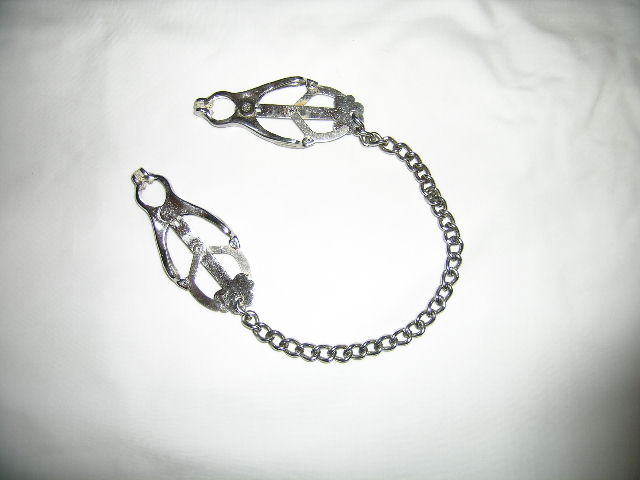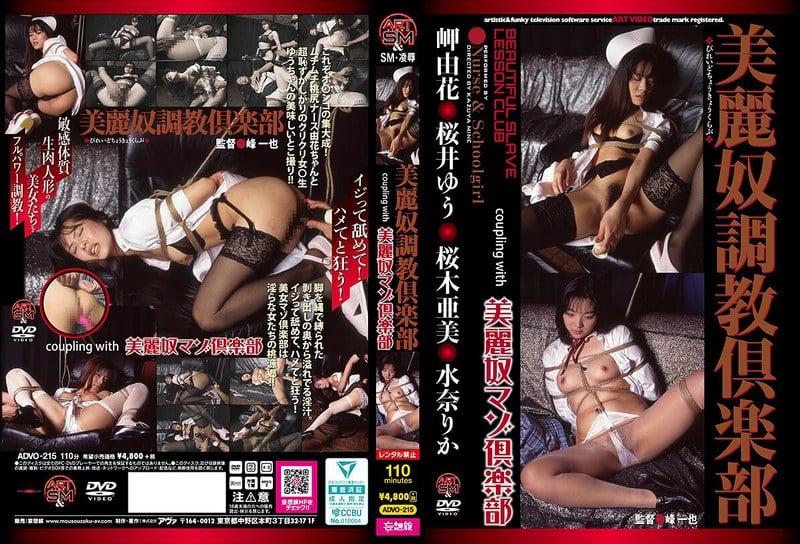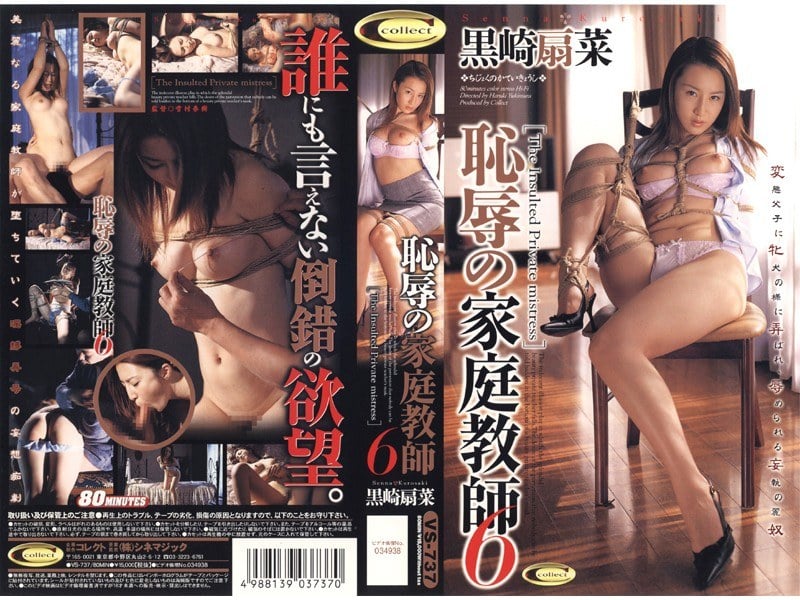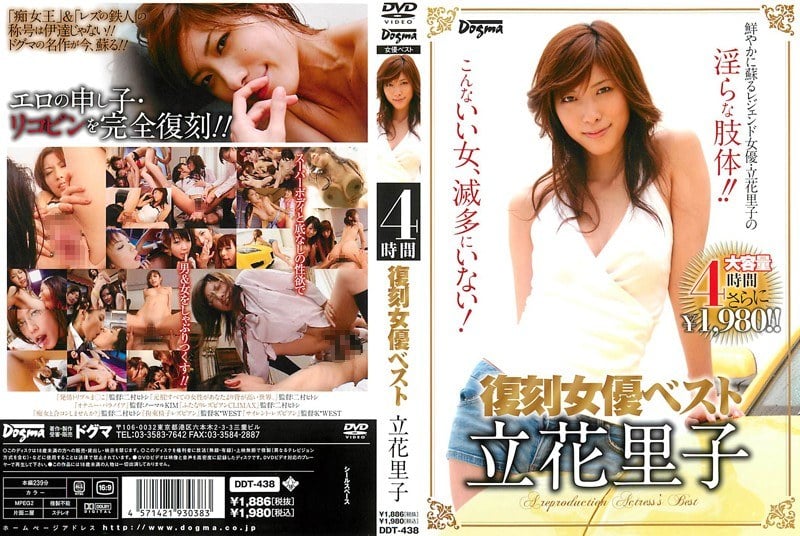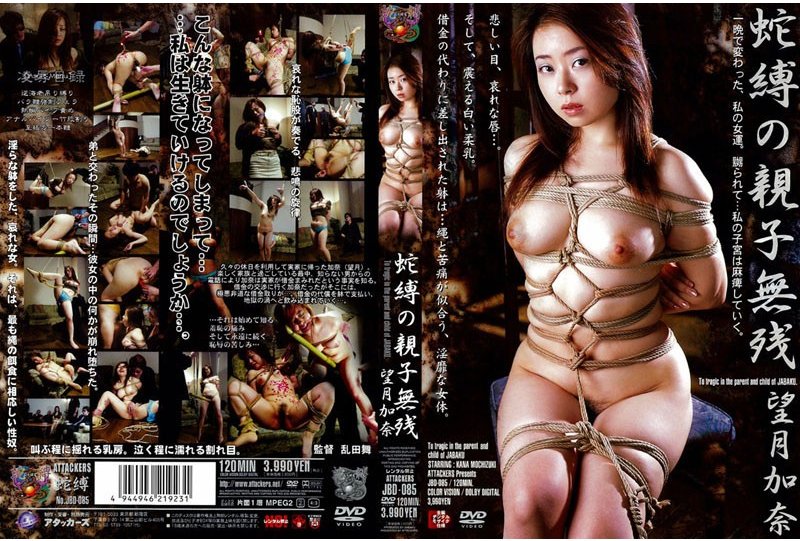Cinemagic Introduction Article
History and Establishment Background
Founding and Origin of the Company Name: Cinemagic is a long-established adult video (AV) maker founded on November 11, 1983. The founder, Shoichi Yoshimura, was originally an editor for an SM magazine at Sun Publishing and a genuine film enthusiast who had belonged to a film studies club in college. It is said that Yoshimura started the company out of a passion to “create a film adaptation” of the works of SM novelist Oniroku Dan, whose work he was in charge of. The company name, “Cinemagic,” combines “cinema” with “magic,” which means “to create something unexpected,” embodying the desire to “create unexpected works with movie-like magic.” At its founding, the company had only about five employees and started out tentatively without specialized departments for public relations or sales. It is said that the entire staff collaborated on everything from filming to promotion.
Entry into the Industry and Early Days: The early 1980s was the era of the popularization of home video decks (VHS), and the AV industry itself was in its infancy. Along with Art Video, which began its activities around the same time as Cinemagic’s founding, Cinemagic is known as a pioneer of SM-themed AV. It initially started as an uncensored maker that did not undergo ethical reviews (as standards for mosaic processing in videos were lenient at the time). However, with the strengthening of industry regulations, it joined the self-regulatory body Japan Video Ethics Association (Videorin) in 1985 and shifted to producing works that went through official reviews. For its very first work, S&M Live Shot: Ecstasy Bondage! Love Slave A (1983), filming took place in a love hotel in Shinjuku’s Kabukicho with a cast featuring a large-busted model and a crew of four. Many of its attempts were considered radical for the time, and it seems to have been an experimental work that took advantage of not being a member of Videorin.
Company History Highlights: In the late 1980s, Cinemagic temporarily produced works featuring solo idol actresses (under the label name “Annie”), but its true specialty remained in SM. To this day, most of its works are SM-themed or fetish works with a strong SM color. From the founding period, Shoichi Yoshimura himself took the director’s chair, creating numerous SM dramas with strong narratives. D-CUP Beauty: Sister L (starring Eri Kikuchi), released in 1985, became a major hit and was turned into a series, instantly elevating the maker’s reputation. Around this time, it also joined Videorin, making a great leap forward as a “major SM maker.” Furthermore, in the “Slave Secretary” series from 1990, the company actively cast top-tier AV actresses of the time such as Yoko Yazawa, Hitomi Kobayashi, and Akira Watase, which was praised for overturning the common belief that “SM works feature unknown actresses.” In 1992, it released a series of ambitious narrative-driven works, including the six-part feature-length drama Immoral Heart starring Izumi Morikawa.
Expansion into Mainstream Cinema: Founder Yoshimura’s long-cherished wish to adapt Oniroku Dan’s works into films was also realized. In 2000, the company produced the mainstream film Season of Infidelity, based on an Oniroku Dan original, directed by Ryuichi Hiroki and starring Ren Osugi, which received high praise. Furthermore, in 2002, it took the lead in producing O-Yo, which was released in Shochiku-affiliated theaters (Original story: Oniroku Dan, Director: Ikuo Sekimoto, Starring: Tetsuya Kumagai and Naoto Takenaka). These moves were an attempt to transcend the boundaries of the adult industry and made the Cinemagic name known to film fans as well.
Recent Trends: In 2006, Cinemagic left Videorin and shifted its work reviews to the new Content Soft Cooperative (CSA, commonly known as Medirin). On the distribution front, from July 2007, it outsourced its sales and distribution operations to Out-Vision (part of the major distribution group Hokuto), strengthening its nationwide DVD distribution network. In 2015, it renovated its own building in Nakano-ku, Tokyo, and began operating it as a dedicated in-house filming studio. Furthermore, entering the 2020s, in addition to its traditional SM drama works, it has begun to develop new labels leaning towards “abnormal” genres, such as fetish-系 and “otokonoko” (※ cross-dressing males), aiming to expand its genres to meet the needs of the times while preserving its long-cultivated SM line.
Main Genres and Characteristics
The Royal Road of SM and Training: Since its inception, Cinemagic has consistently specialized in the SM (Sadism & Masochism) genre. Specifically, its works are centered on hard-core themes such as physical restraint through bondage and tying, the pleasure of masochism through training, and humiliation/shame play that incites a sense of disgrace. Whereas its rival, the long-established maker “Art Video,” tended to depict SM play itself in a documentary style, Cinemagic has insisted on SM works crafted as narrative-driven dramas. By carefully depicting how women in various positions—such as beautiful teachers, new office ladies, and housewives—are trained within a story, viewers can experience not just sexual excitement but also a sense of immersion in the plot. In the early days, all works were directed by Shoichi Yoshimura himself, who succeeded in deeply portraying the world of SM through the “fusion of eros and drama.”
Gorgeous and Bewitching Direction: Cinemagic’s works are also praised for their aesthetically pleasing and bewitching direction, rather than being merely violent or grim SM. In an era when SM videos tended to be dark and gloomy, Cinemagic’s productions, with their beautiful and sophisticated package designs and visual aesthetics, revolutionized the conventional image. For instance, a unique aesthetic sense can be felt in the corsets and bondage fashion worn by the heroines, as well as in the lighting and art direction for each scene. Great importance is also placed on the psychological depiction of the heroine as she is consumed by shame during the story’s development. A key characteristic is the sensuous portrayal of the “process of falling,” rather than simply listing extreme acts. This approach is hailed as the “royal road of SM” and has garnered support from enthusiasts.
Diverse Fetish Elements: Current Cinemagic works incorporate a variety of fetish elements centered on SM. A representative example is scatology (excrement-related play), and works dealing with enemas and excretion humiliation have become a major genre for Cinemagic. Indeed, titles of recent works are lined with extreme words like “enema,” “excretion,” and “anus,” indicating how they are further exploring the world of SM with a focus on scatology play. In addition, the genres are extremely broad, ranging from lesbian SM depicting interactions between women, cosplay humiliation featuring unique costumes like mourning clothes, nurse uniforms, or female warrior outfits, to even gender-fetish themes involving transwomen and “otokonoko.” Leveraging its many years of experience, Cinemagic continues to meet the diverse tastes of SM fans by actively incorporating new fetish elements.
Documentary-Style Works Too: As mentioned earlier, while Cinemagic emphasizes drama, it also produces works with a realistic, documentary-style approach. By incorporating interviews with actresses and behind-the-scenes-style footage, these series are presented as if they are recording real amateur women being genuinely trained. These are developed under labels like “Noir.” This allows them to appeal to a fan base seeking a rawness that differs from the highly fictionalized drama works. Thus, Cinemagic possesses both a cinematic-dramatic approach and a realistic documentary line, broadening the expressive range of the SM genre.
Affiliated/Featured Actresses and Directors
Signature Actresses: Cinemagic has traditionally not been the type of maker to retain a fixed roster of exclusive actresses, but numerous famous AV actresses have appeared in its works since its founding. Among them, Eri Kikuchi is a signature presence who made her AV debut in the aforementioned Sister L in 1985 and shot to stardom. The contrast between her innocent face and glamorous body with the chaste costume of a nun, and her descent into harsh SM training, caused a great shock at the time. Subsequently, from the late 1980s to the early 1990s, many popular actresses such as Rino Shimazaki (star of Immoral High School Girl, etc.), Yuri Okamoto (star of Yume’s Bond), and Mariko Itsuki (star of Rubber M) played leading roles in Cinemagic works. Furthermore, in the 1990s, top-tier actresses of the time like Yoko Yazawa, Hitomi Kobayashi, and Akira Watase appeared in the “Slave Secretary” series, creating a buzz. From these achievements, it established its status as a “serious SM maker where even big-name actresses appear.”
Since the 2000s, many actresses active in SM and fetish works have appeared, such as Miku Aoyama, Emi Kubo, Maki Tomoda, Yuu Kawakami, and Nozomi Mashiro (Yuu Kawakami is a talented actress who performs with passion in a wide range from training to lesbian SM). There have also been works where AV idols like Ryo Hitomi, Yumi Kazama, Ran Monbu, and An Namba made guest appearances. In recent years, the casting of new actresses with strong fetish appeal like Aya Hanamiya, Shiori Tokunaga, and Ryou Dan has become prominent, with a diverse lineup of actresses from veterans to newcomers gracing Cinemagic productions. Overall, there is a tendency to cast actresses who can endure hard-core play and actresses with high acting skills, and the reality and sensuality of the stories are supported by the performances of the cast.
Famous Directors and Staff: Supporting Cinemagic’s visual works have been its unique directors. First and foremost is the founder, Director Shoichi Yoshimura, who directed his company’s works from the early days of the 1980s and was known as a “master of SM drama.” Yoshimura was a heavy drinker with a bold and generous personality, but there are testimonies that he was “a man who worked twice as hard in return for being willful,” and his energetic and uncompromising attitude was reflected in the quality of his works. Yoshimura passed away in 2015, but his spirit has been inherited by the current staff.
Supporting Cinemagic’s foundation after Yoshimura’s passing is Director Shinichi Kawamura. Kawamura is also known as the “maestro of SM video” and has continued to create masterpieces at Cinemagic as his home ground for over 20 years. The late Director Haruki Yukimura, who was also a bondage master, launched the bondage-specialized label “Jō” within Cinemagic, pursuing realistic and artistic rope-tying depictions (Director Yukimura passed away in 2016). In addition, other talented internal and external directors such as Director Makoto Maruhashi (also known as Marukatsu, who has his own “VIXEN” label), Director Taichi Kasuga, and Director Yuichi Chiba are responsible for directing Cinemagic’s works. Furthermore, renowned bondage masters and training experts cooperate in directing the SM scenes, and rope masters such as Chimuwo Nureki and Go Arisue sometimes supervise the tying. Thanks to this staff work, Cinemagic’s videos feature authentic SM depictions that balance safety management with aesthetic perfection.
Sub-brands and Label Development
Cinemagic operates multiple labels (sub-brands) to segment its product lineup and develop them according to their unique characteristics. While new labels have been established and integrated to meet the demands and themes of the times, the following are known as the main labels:
CineMagic Label: This is the main label, named after the company, which was used from its founding. Most works released until around 2000 bore this label name, but it is no longer used as a label name following the establishment of new labels described below. The product numbers of works released before then have been carried over to successor labels.
Collect: This is the current mainstream label. The name was changed from Cinemagic to Collect in 2000, starting with the work Slave Teacher: Humiliation After School, Junko Asamiya. In terms of content, it follows the traditional Cinemagic line, centering on training drama works starring popular AV actresses. The name “Collect” is said to have been adopted as a label name to group together the ever-increasing series, directly from the English word’s meaning of “to gather a collection of slaves.” Since then, it has produced numerous masterpieces such as the Immoral series and the Slave Teacher/Slave Secretary series, and it is still positioned as Cinemagic’s signature label. The concept of emphasizing drama and narrative has remained unchanged since the company’s founding, making it the very core of Cinemagic.
Noir: As its name, French for “black,” suggests, this is a documentary-style label with a dark and hard-core style. It is not limited to bondage and develops works that delve into realistic training using amateur-type actresses and extreme play such as scatology and enemas. Its content is characterized by allowing viewers to re-experience the raw record of shame and pleasure, rather than a crafted drama, making it geared towards core enthusiasts.
縄〈Jō〉: “Jō” (Rope), as its name implies, is a label specializing in bondage (rope restraint). It was launched together with the late director and bondage master Haruki Yukimura, and features a collection of works that pursue the beauty and terror of rope, such as authentic hemp rope torture and suspension bondage. The simple, single-kanji label name “縄” succinctly tells the story of its content.
Kanjuku: As the word “kanjuku,” meaning “fully ripe,” suggests, this is a label themed around mature adult women. It corresponds to so-called mature woman (jukujo) SM and背徳的な調教劇などが該当します (dramas of immoral training involving married women). Although the number of works is not large, it differentiates itself from other labels centered on young actresses by depicting female figures who exude a ripe sensuality.
Lilies: This is a label specializing in lesbian works, symbolized by the lily flower. It focuses on SM play and training performed between women, expressing the aestheticism of lesbian SM in a world where men do not appear at all. It is a unique presence within Cinemagic but has a persistent popularity as a niche of fetishism.
Gang: This is a label that handles group play and cosplay. It has released project-based works with less of an SM focus, such as group rape (so-called gangbangs), orgies, and special costume projects. It contains relatively lighter-themed works within Cinemagic’s lineup and can be considered a label with introductory elements to SM.
Vixen: This word, meaning “female fox” or “mischievous girl” in English, is a label produced by Director Makoto Maruhashi (aka: Marukatsu). It is not tied to a specific theme and develops project-based SM and fetish works that showcase the director’s personality. Many titles and content have a playful feel, and like the label name, it is characterized by a bewitching and provocative color.
Nymph: Nymph means “fairy,” but here it is positioned as a label that handles all things fetish. It releases works that pursue fetishistic themes other than SM (foot fetish, pantyhose fetish, urination, etc.) and experimental works that do not fit into existing categories.
陰陽〈In’yō〉: This label, bearing the name from Yin-Yang philosophy, specializes in genres such as “otokonoko” (= men with feminine appearances) and transwomen. It focuses on works where beautiful boys or transwomen who could be mistaken for women are the subjects of training and masochism, making it a new-axis label that responds to the recent demand for diverse gender fetishes.
Industry Reputation, Uniqueness, and Differentiation from Competitors
Status as a Veteran SM Brand: As a long-established maker that has been active for over 40 years, Cinemagic has built a solid reputation within the industry. Its name is so well-known that people say, “If you’re talking about SM, you’re talking about Cinemagic,” and its existence has had a major influence on later SM-themed makers. As mentioned earlier, from its early days, it revolutionized the image of SM videos with beautiful packaging and a narrative-focused style, and its track record of sharing popularity with Art Video is a fact. AV writer Rio Yasuda praised Cinemagic’s journey, stating they are “continuing to walk the royal road of SM,” and lauded its unwavering brand concept. Furthermore, its ability to balance dramatic elements and sensual beauty without falling into mere extremism is valued as a “unique artistry,” creating devoted fans.
Differences from Competitors: While many other makers focus on SM and training, Cinemagic has succeeded in differentiating itself on several points. First is its narrative quality and directorial power. Compared to competitors like Attackers (founded in the late 90s, focusing on kidnapping and violation dramas), Dogma (known for hard SM and scatology works), or the highly fetish-oriented GLOIRE QUEST, the depth of Cinemagic’s stories and the meticulousness of its visuals stand out. Particularly in the 1980s and 90s, while Cinemagic had its AV actresses perform as serious actresses, other companies tended to prioritize the sexual acts, with acting ability being secondary. This difference led to a gap in evaluation between “cinematic AV” vs. “documentary-style AV.”
The breadth of its product lineup is also a strength. Cinemagic covers everything from mainstream SM like training and bondage to lesbian SM, scatology, cosplay training, and even “otokonoko” works, offering a diverse, web-like range of products within the SM genre. It also takes on experimental projects not seen at other companies, giving it the presence of an “SM department store.” At the same time, because the direction of works is clearly divided by label, it’s easy for fans to choose based on their needs, whether they “want to watch a serious SM drama today” or “want to watch hardcore scatology today.”
Furthermore, the accumulation of talent and know-how is a point of differentiation from competitors. Having specialized solely in SM for many years, the company has a network of excellent directors, staff, and skilled bondage masters, which directly translates into the quality of its works. Its production stance, backed by trust and a proven track record—such as artisanal directorial techniques that other companies cannot imitate and know-how in safety management (it is said that all unused footage is thoroughly destroyed to prevent leaks)—is also a reason for its high evaluation.
Industry Reputation: While Cinemagic has not had the flashiness of winning direct titles in various AV industry awards, its body of work has garnered strong support. It is respected as a legendary maker, as seen in special features on satellite channels like SKY Perfec! Adult, and retrospective articles by AV critics. Overall, Cinemagic is highly regarded as a “long-established maker that sticks to its own path without being swayed by trends,” and it continues to maintain a unique position in the competitive adult industry.
Target Audience and Marketing Strategy
Core SM Fan Base: Cinemagic’s main target is undoubtedly core adult viewers who enjoy hard-core SM and training play. Many of its fans from the early days are now middle-aged or older, and there is a fixed fan base that has followed the brand for many years. These long-time fans place their trust in the idea that “SM equals Cinemagic,” showing support to the extent that they will check out any new release. In recent years, the spread of internet streaming has made Cinemagic’s works more accessible to younger generations of fetish lovers, leading to the acquisition of new fans. While their tastes are broad, ranging from users seeking the thrill of violation and bondage to film-oriented users who “want to watch AV with a good story,” the common thread is that they are a “segment that seeks both extremity and narrative.”
Sales Channels and Strategy: Cinemagic has traditionally focused on sales and rentals of video software (VHS, later DVD), but it now actively supports digital distribution. Its official website offers online download sales and streaming of its works, and its productions can also be viewed on major video streaming platforms (like FANZA, formerly DMM). Since 2007, as mentioned earlier, by entrusting distribution to Out-Vision, Cinemagic’s works became available in adult DVD stores nationwide. For retail stores, they create elaborate jacket designs to stand out on shelves, and for online, they engage in marketing tailored to the medium, such as weaving specific fetish elements (“enema,” “hypnosis,” “confinement,” etc.) into titles to catch the eye in searches.
Moreover, Cinemagic has focused on promotion in specialized magazines and at events. It has sought to reach core fans by developing interviews and advertisements in fetish and SM-themed magazines and web media, including SM Sniper, a magazine that Shoichi Yoshimura himself was once involved in editing. At the time of a work’s release, fan-service events such as actress signing sessions and film set tours are held sporadically. They also organize special programs on adult satellite channels, and SKY Perfec! Adult has broadcasted features on Cinemagic works and interviews with directors and actresses. In these venues, they promote their presence as a “long-established SM brand” and strive to retain both new and old fans.
Brand Image Strategy: Cinemagic positions its uniqueness in “tradition and quality.” By clearly stating its founding year on its website and packaging, it emphasizes its history since “Founded in 1983” to appeal to a sense of trust as a long-established company. It has also largely kept its logo design unchanged for many years, establishing it as a brand logo that SM fans recognize instantly upon seeing the “CineMagic” text. Furthermore, while pushing keywords like “training,” “bondage,” and “humiliation” to the forefront, it presents them with elegant text and visuals, creating an image that balances extremity with quality. In this way, by promoting itself not as just another extreme AV maker but as a venerable specialty brand, it continues to acquire a devoted fan base.
Visual Style, Directorial Characteristics, and Filming Techniques
Narrative-Focused Visual Style: A key feature of Cinemagic’s visuals is that, despite being AV, they are directed much like a feature film. A solid script is prepared for filming, and the actresses fully embody their roles, delivering lines and performing actions. In the introductory part (prologue) before the training scenes, the human relationships and situations are carefully depicted, making the audience feel the narrative necessity of “why this woman is suffering this fate.” Once the SM play begins, the camerawork not only captures the subject’s expressions of fear and shame in detail but also focuses on fetishistic details like close-ups of the body bound by ropes and tools, and the shadows of violent actions. The lighting also creates rhythm, switching from natural-light style in drama scenes to a spotlight style that emphasizes shadows in play scenes, enhancing the tension. This visual style allows the viewer to become immersed in the story’s world while heightening sexual excitement.
Filming Techniques for Bondage and Training Scenes: On a Cinemagic set, the utmost consideration is given to the reality and safety of the SM play. In bondage scenes, specialized rope masters supervise and participate, taking meticulous care not to place excessive strain on the actress’s body while capturing the beautiful patterns of the ropes and the sensual beauty of the bound limbs on camera. A sense of realism is created by capturing details that appeal to the five senses, such as close-ups of bound hands and feet, the sound of ropes creaking, and dripping candle wax. In scenes of humiliation play, the camera may deliberately pull back to a wider shot to show the entire space, visualizing the echoing moans in a large room or the inescapable situation. On the other hand, close-ups showing the actress’s expressions of pain and humiliation are inserted at key moments, providing a perspective that empathizes with the masochist’s psychology. In editing, sequences that show the entirety of the play in a long take are interwoven with sequences that are cut with a varied rhythm, creating a pace that keeps the viewer engaged.
Strict Policies: As a filmmaking policy, Cinemagic upholds “preventing leaks” and “protecting quality.” As one example, the company has publicly stated that all leftover unused footage (NG takes, alternate angle shots, etc.) is destroyed after editing is complete. This is to ensure that uncensored (no mosaic) footage is never leaked to the public, and it shows the company’s stance of prioritizing compliance and actress safety. Regarding the recently scrutinized issues of forced appearances and human rights violations in the AV industry, the company, with its sense of responsibility as a long-established maker, works with industry organizations to adhere to guidelines. On set, consideration is given to the mental and physical care of the actresses, and behind the hard-core content, there is meticulous care, such as taking breaks, ensuring hydration, and providing body relaxation. Thanks to these thorough production policies, Cinemagic’s works are endowed with a sense of trust that allows viewers to immerse themselves without worry.
Commitment to Visual Expression: Cinemagic pursues a unique aesthetic in its visual expression. For example, even in its 1980s video works, it employed soft lighting and filter processing reminiscent of film movies, and created a sense of luxury by choosing classical or solemn music for the BGM, showing ingenuity throughout. Even in recent digital productions, there are diverse expressions, such as works color-graded to a nostalgic tone to create an SM graphic novel-like atmosphere, or works that pursue realism with a handheld camera’s subjective viewpoint. However, what remains consistent is the theme of how to visualize “the beauty of masochism,” and the refusal to compromise on the direction necessary to achieve it. The visuals created by the united efforts of the director and staff reach a level that could be called a form of art, and this is surely one of the reasons Cinemagic has been supported for so long.


